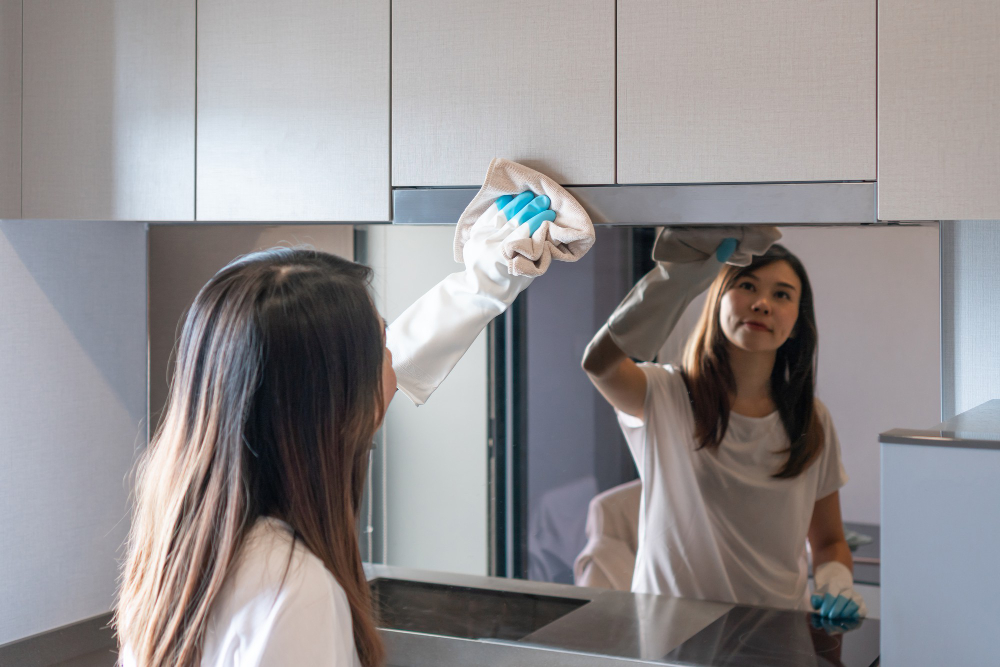Prevent Mold Growth: Your Kitchen's Defense Guide

Picture this: you're volunteering to retrieve the much-needed midnight snack, and as you open your kitchen cabinet, you're greeted with a revolting sight. Unsightly patches of mold are spreading across the walls, your condiment bottles aren't safe, and even the pasta packets are tainted. Mold in the kitchen is not just an aesthetic nuisance but also a health concern many of us don't take seriously until it's too late.
In this blog post, we're weaving a narrative of prevention, teaching you how to craft a kitchen that's not just deliciously inviting but also impervious to mold's advances. Whether you're a fan of five-star dinners or a microwave meal maestro, everyone's kitchen is a potential mold playground. Uncover the science and secrets behind mold's stubborn persistence and how you can stop it in its tracks.
The Microscopic Menace: Understanding Mold
Before we parade preventive measures, it's vital to understand the adversary—mold. Mold is a type of fungi that grows in multicellular strands called hyphae. When multiple hyphae gather, they form what we commonly recognize as mold. These little mold colonies are responsible for that musty odor and are usually a green, blue, or black hue, though they can appear in a myriad of colors.
Mold's M.O.: Where and Why It Grows
Mold isn't picky when it comes to living conditions. It needs moisture, warmth, and a nutrient source to call any place home. Your kitchen, unfortunately, offers all three in abundance. The first step in prevention is identifying the likely culprits that harness these conditions:
- Leaky Faucets and Pipes: Persistent water sources are mold's best friend. Be vigilant for water damage signs, even in hidden areas.
- Poor Ventilation: Steam from cooking creates a warm, humid environment. Ensure your kitchen is well-ventilated to keep the air moving.
- Porous Materials: Wood, fabric, and some wall paints can provide mold with the necessary nutrients it seeks. Opt for non-porous and mold-resistant materials where possible.
Crafting a Mold-Resistant Kitchen
1. Clean Like There's No Tomorrow
Regular cleaning is your frontline defense against mold. Use mold-killing products and natural solutions like vinegar to keep surfaces spick and span. Pay special attention to corners, behind appliances, and the undersides of cabinet shelves—these are mold's favorite hideaways.
2. Monitor Moisture
An excess of moisture is the number one catalyst for mold growth. Use a dehumidifier, if necessary, to keep the humidity in your kitchen below 60%. Fix leaks promptly and ensure that no spill goes unattended. After a heavy washing session, double-check to see if any areas need additional drying.
3. Optimize Ventilation
When you're whipping up a storm in the kitchen, it is essential to have a proper ventilation system in place. If your kitchen doesn't have a vent, consider installing one. An open window can also significantly decrease humidity levels. Where possible, leave cabinet doors open to allow air to circulate.
4. Storage Tactics
The first step to defeating mold in your cupboards is organization. Keep food stored in airtight containers, and don't forget to check the shelves and walls for any sign of mold. If using a cabinet to store cleaning products or rags, keep them dry and well-aired.
5. Be Proactive with Plumbing
Regularly inspect and maintain your kitchen's plumbing system. Look for signs of moisture or leaks, and don't shy away from calling a professional for a check-up. With a proactive approach, you can remedy small issues before they become mold magnets.
6. Seal the Gaps
Mold thrives in hidden, small spaces. Seal any gaps or cracks in walls, floors, and around pipes where mold could potentially grow unnoticed. This not only keeps mold at bay but also helps with energy efficiency.
7. Mind the Materials
In a world where mold thrives on organic materials, non-porous is the way to go. Choose mold-resistant paints for your kitchen walls, opt for metal kitchen furniture or sealed wood, and make sure your countertops and backsplashes are of nonporous materials.
In Case Mold Strikes
In the unfortunate event that mold does rear its resilient head, it is crucial to respond swiftly and thoroughly. Protect yourself with gloves and a mask, and create a cleaning solution of water and detergent. Scrub the affected area with the solution, rinse with clean water, and dry thoroughly. If the infestation is extensive, or if you feel uneasy about it, do not hesitate to consult a professional.
Future-Proofing Your Kitchen
Prevention is the best cure, and in the case of mold, this couldn't be truer. Future-proofing your kitchen against mold ensures that the heart of your home remains clean, healthy, and a place you want to be.
Take the First Step to Safeguarding Your Space
Don't wait until it's too late—incorporate these preventative measures today. When you're proactive about mold prevention, you're not just maintaining your kitchen; you're also safeguarding the well-being of everyone who steps foot in it.
For those in the Delray Beach, FL area looking for a mold-resistant kitchen environment, Blu Atlantic Apartment Homes offers apartments designed with modern living in mind. With pristine kitchens, top-notch maintenance services, and a community that understands the value of a mold-free zone, we invite you to schedule a personal tour and see how your kitchen can be a bastion against mold growth. It's time to take back control over your culinary kingdom. If you're looking for apartments for rent in Delray Beach, FL, contact Blu Atlantic Apartment Homes to schedule a personal tour.